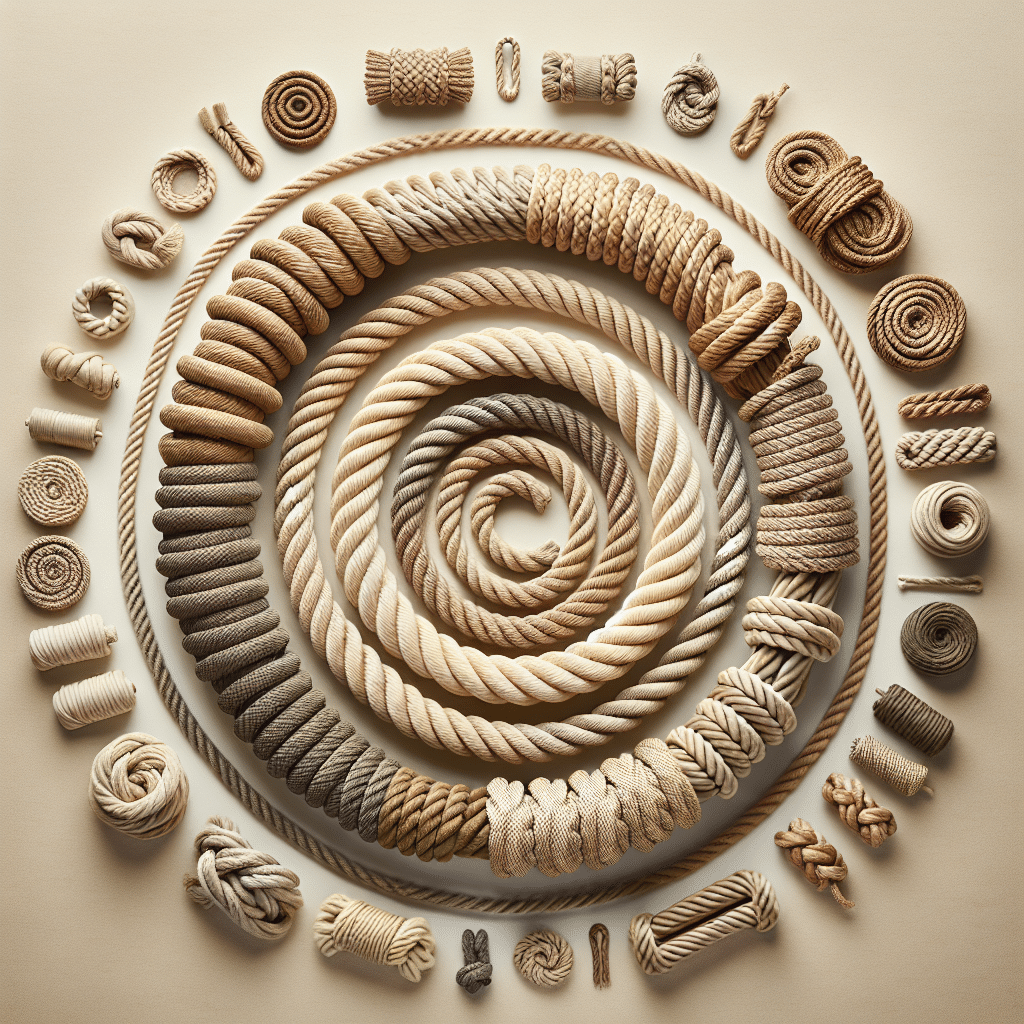The Rise of Eco-Friendly Tug Ropes from Natural Fibers
Understanding Eco-Friendly Tug Ropes
Eco-friendly tug ropes made from natural fibers are a sustainable alternative to synthetic options, harnessing the natural resilience and strength of organic materials. These ropes biodegrade fully, reducing plastic waste and environmental footprint. The shift towards using natural fibers in various applications, including tug ropes, aligns with increasing global awareness regarding sustainability and environmental conservation.
Common Natural Fibers Used in Tug Ropes
-
Hemp: The Sustainable Workhorse
- Durability: Hemp fibers are known for their remarkable tensile strength, making them ideal for heavy-duty applications. Hemp tug ropes can withstand significant strain without fraying or breaking.
- Biodegradability: Hemp ropes are completely biodegradable, decomposing without leaving harmful residues, which aligns perfectly with eco-friendly goals.
- Resistance to Mildew: Hemp’s natural resistance to mold and mildew enhances its longevity, making it suitable for outdoor applications.
-
Jute: The Versatile Option
- Strength and Flexibility: Jute fibers offer a strong yet flexible alternative, which is perfect for various tugging activities. The natural fiber’s flexibility allows for ease of use in different scenarios.
- Sustainability: Jute is often referred to as the “Golden Fiber” and is one of the most affordable natural fibers produced in an environmentally friendly manner.
- Natural Insulation: Jute ropes have insulating properties, making them useful in specialized applications where temperature control is necessary.
-
Sisal: The Tough Competitor
- Natural Toughness: Sisal is another strong fiber extracted from agave plants. Its rigidity and strength make it suitable for applications requiring high durability.
- Weather Resistance: Sisal ropes are resistant to seawater and UV rays, making them great for marine applications.
- Ease of Maintenance: Sisal ropes can be easily cleaned and dried, allowing for convenient maintenance over time.
-
Cotton: The Soft Touch
- Comfort and Usability: Cotton tug ropes provide a soft texture, ideal for situations where comfort is paramount, such as training pets.
- Biodegradability: Like other natural fibers, cotton is fully biodegradable and poses no threat to the environment.
- Color Options: Cotton fibers can be dyed easily, allowing for various attractive designs that appeal to consumers.
Benefits of Using Eco-Friendly Tug Ropes
-
Environmental Impact
- The use of natural fibers helps combat the pollution caused by synthetic fibers, contributing positively to environmental sustainability.
- Decomposes naturally, which prevents the accumulation of non-biodegradable waste in landfills.
-
Reduced Carbon Footprint
- Production processes for natural fiber ropes typically emit fewer greenhouse gases compared to synthetic alternatives made from petrochemicals.
-
Safety and Health
- Natural fiber ropes are free from harmful chemicals, making them safer for both users and the environment, particularly in pet-related applications.
-
Versatility
- Eco-friendly tug ropes can be used in various applications, including agricultural, marine, outdoor, and recreational activities.
Choosing the Right Eco-Friendly Tug Rope
-
Load Capacity: Determine the weight and resistance requirements for your specific application to choose the appropriate natural fiber rope.
-
Environmental Conditions: Consider factors like moisture, UV exposure, and temperature variations, which can influence the choice of fiber. For instance, sisal excels in outdoor settings, while cotton might be better suited for indoor use.
-
Length and Thickness: Ropes come in various thicknesses and lengths; select one that matches your intended use to ensure optimal performance.
-
Budget and Availability: While natural fiber ropes may sometimes be more expensive upfront, the long-term benefits and environmental impacts can outweigh initial costs. Consider sourcing from local suppliers to support sustainable practices.
Maintenance and Care for Eco-Friendly Tug Ropes
Proper care can significantly extend the lifespan of natural fiber tug ropes:
-
Regular Cleaning: Remove dirt and debris after use to prevent decay. Always air dry to avoid moisture buildup.
-
Storage Conditions: Keep ropes in a cool, dry place to prevent mildew growth. Avoid prolonged exposure to direct sunlight.
-
Avoid Chemical Treatments: To maintain biodegradability, refrain from using synthetic chemicals or dyes during maintenance.
-
Check for Wear: Regularly inspect ropes for fraying or damage, replacing them as needed to ensure safety.
Future Trends in Eco-Friendly Tug Ropes
As environmental sustainability continues to gain traction globally, the tug rope industry is expected to evolve significantly. Innovations may include development in hybrid natural-synthetic fibers that retain biodegradability while enhancing strength and versatility. The focus will likely shift from merely using natural fibers to creating composite ropes that maximize the benefits of each material.
Recycling programs may emerge that encourage consumers to return used ropes for repurposing, further promoting eco-conscious behaviors.
Conclusion: Embracing Eco-Friendly Tug Ropes
Increasingly, businesses and consumers are recognizing the importance of sustainable practices in daily life. Eco-friendly tug ropes made from natural fibers represent a crucial step toward reducing environmental impact while retaining functional excellence. Whether in agriculture, outdoor sports, or marine applications, natural fiber ropes are a viable, responsible choice for those looking to minimize their ecological footprint while enjoying superior performance.
